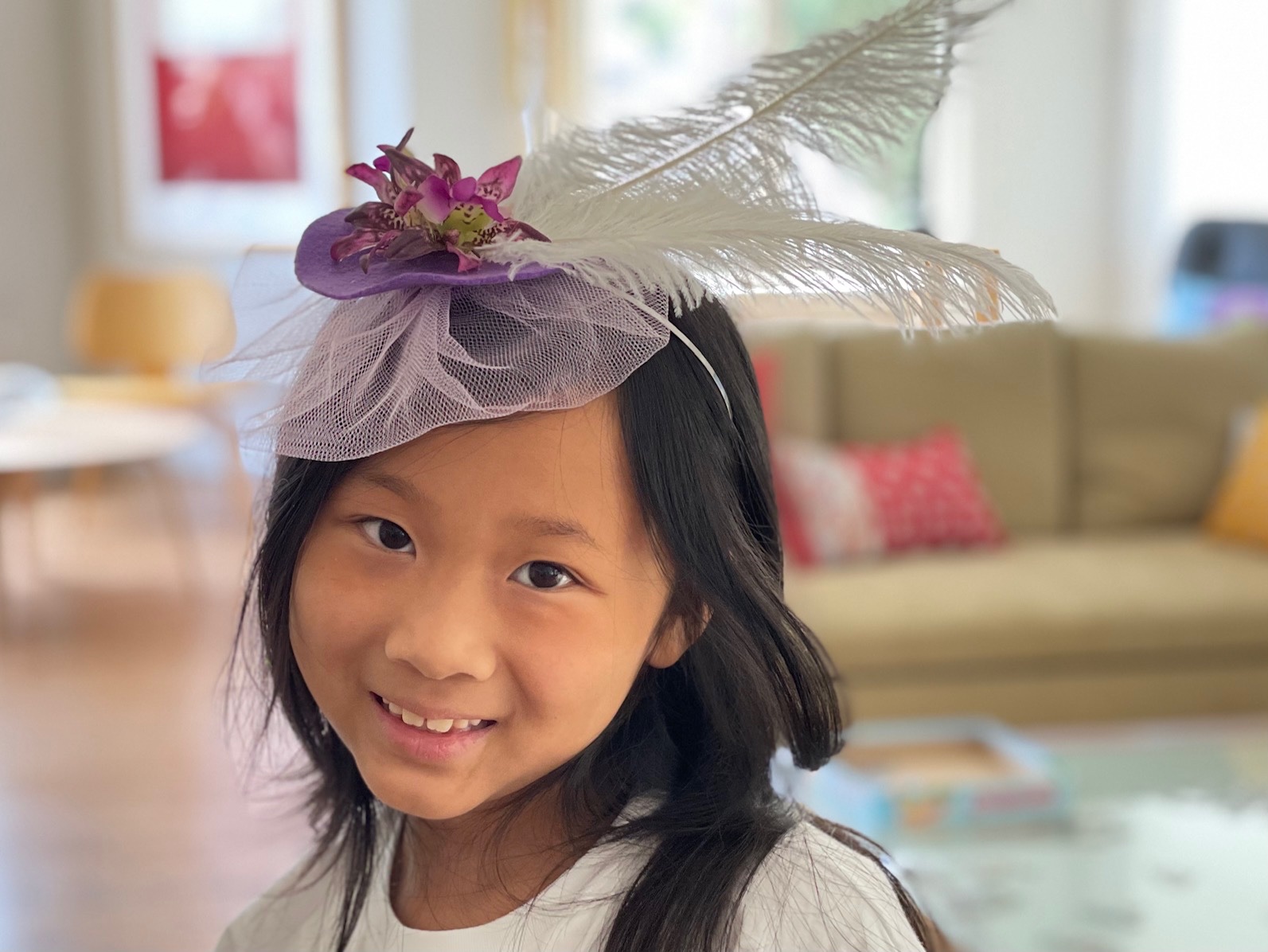Camp Grandma #1: Ultimate Way to Teach Reading
A love of books and a love of reading are essential qualities of an enriched life. And the ultimate way to teach reading is to bring a book to life. For our first Camp Grandma session, I included such diverse activities as listening to music, learning words in Spanish, and whipping up a simple, delicious recipe to enhance our reading experience.
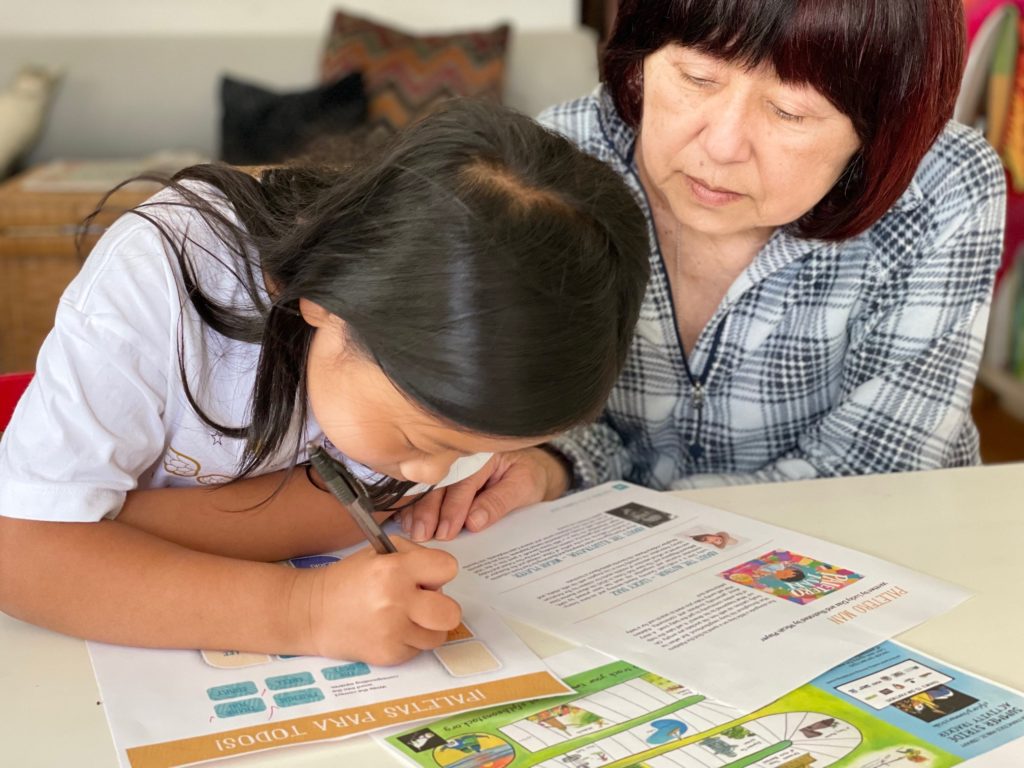
Best Resource for Teaching Reading
Miss T just finished second grade, so she is already reading quite well. However, I want to increase her proficiency and help her develop a lifelong love of reading, so I looked to our public library for online support.

I found our library provides:
- A summer reading program where kids can track their reading hours online or on paper
- A recommended list of age-appropriate books
- Lesson ideas and related activities to enhance the reading experience
Next week on Camp Grandma, Miss T and I will make fascinators, headpieces that are fancy enough for a royal wedding.
Our Camp Grandma Reading Program
For convenience, I’m simply borrowing children’s e-books from the library, to download to my iPad. However, if you can afford to buy the books, please do so to support the authors. Actually, I’m taking my cue from my son; he borrows the books to see which ones the kids like best before buying copies to keep.
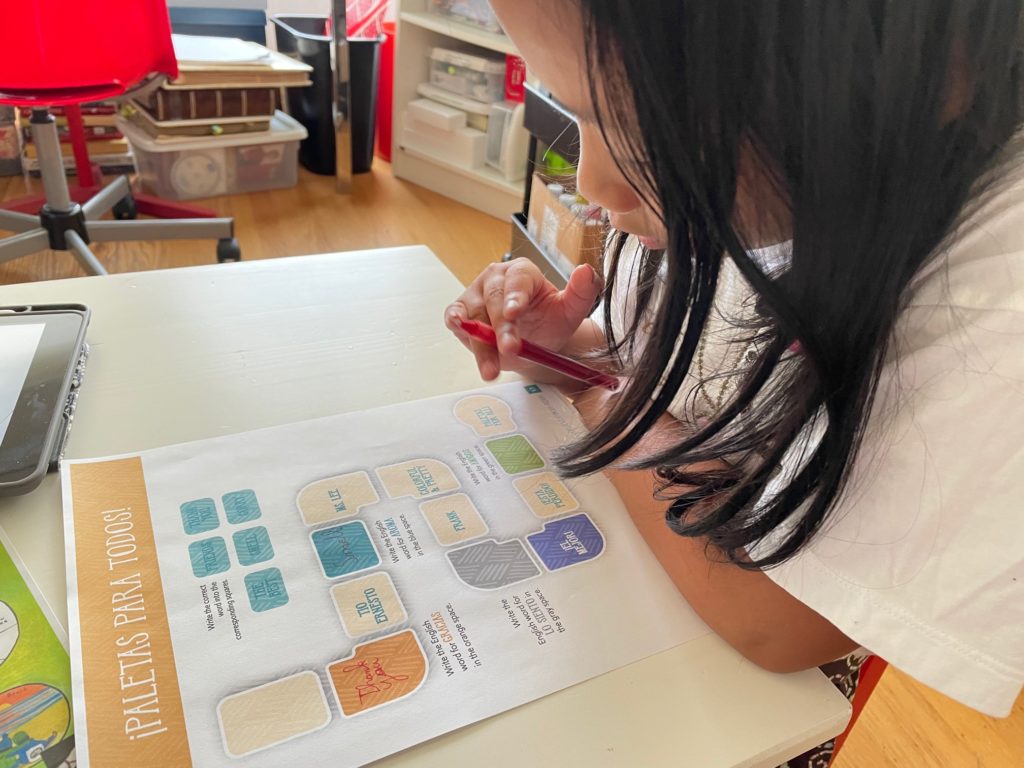
If you’re a geographically distant grandparent, you can share your e-book screen so that your grandchild can see the book as they–or you–read it. To learn how, research “screen share” for zoom, FaceTime, or whatever application you are using.
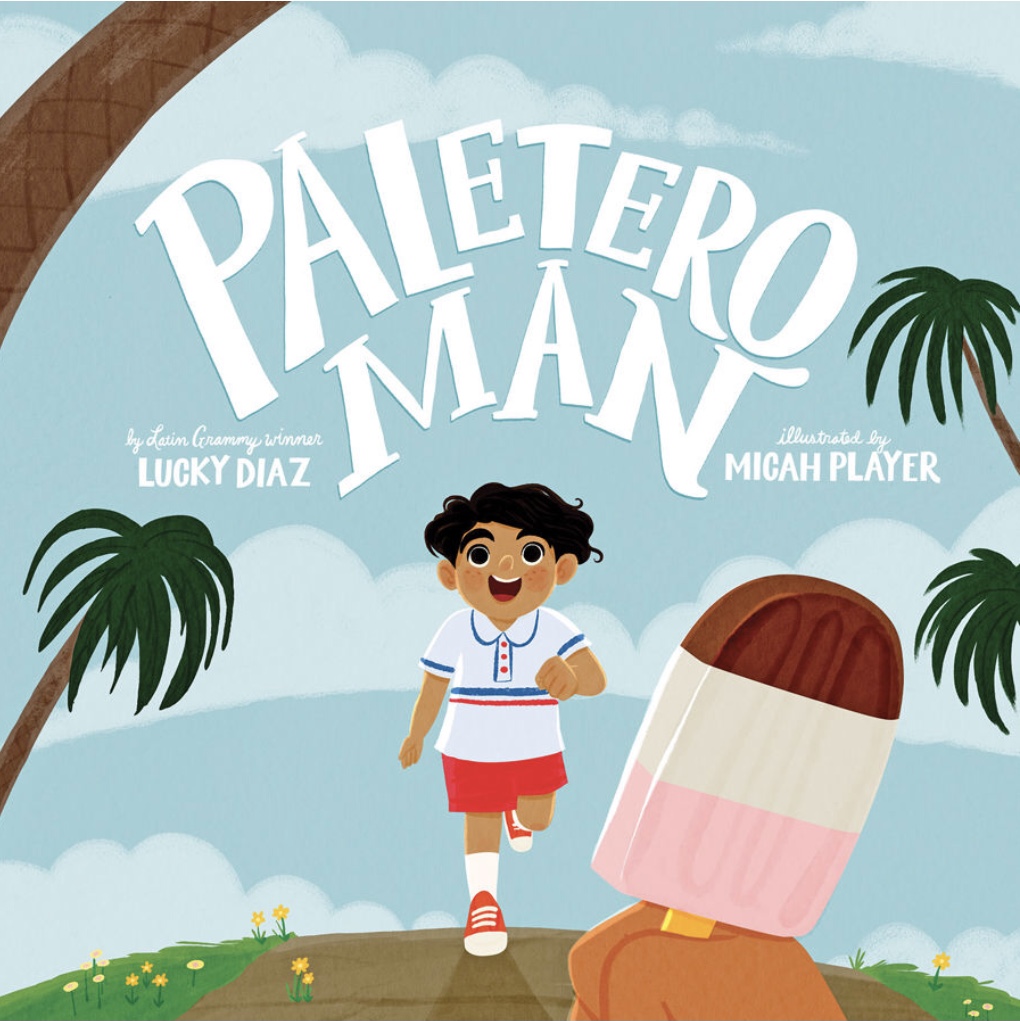
This week’s book is Paletero Man by Lucky Diaz and illustrated by Micah Player. It’s a charming story about a child in Los Angeles looking for the paletero man. He’s the pushcart purveyor of paletas, delicious Mexican ice pops made from fresh fruits.
How we Approached the Story
I created a rich, sensory experience around the book that focused on sight, taste, and sound.
- I had Miss T read the book to me. Because the words rhyme, it’s especially fun to read aloud.
- Looked up some of the Spanish words we didn’t know.
- Learned a little about the author and illustrator from a summer guide provided by the library.
- Discussed the story together; Miss T’s eagle eyes had caught an important clue in the illustration early on.
- Completed a worksheet about the book, prepared by our library.
- Listened to the catchy, upbeat song, Paletero Man, on YouTube by the book author Lucky Diaz, who is also a multi-Latin Grammy Award winner and a six-time Emmy-nominated musician and song writer.
- Wrote up a recipe for paletas, merging recipes I found on the Internet, to create our own version.
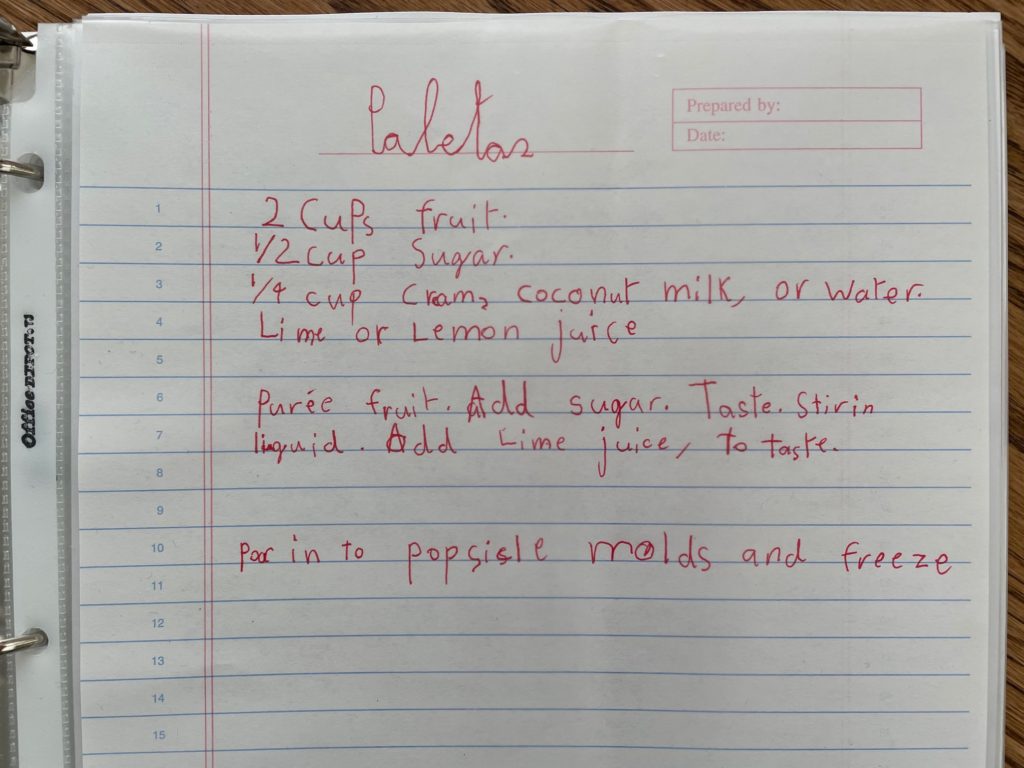
- Went to the kitchen and made strawberry paletas.
- Served the paletas as dessert for our Friday night family dinner; I read the story to Miss T’s little brother, who was riveted.
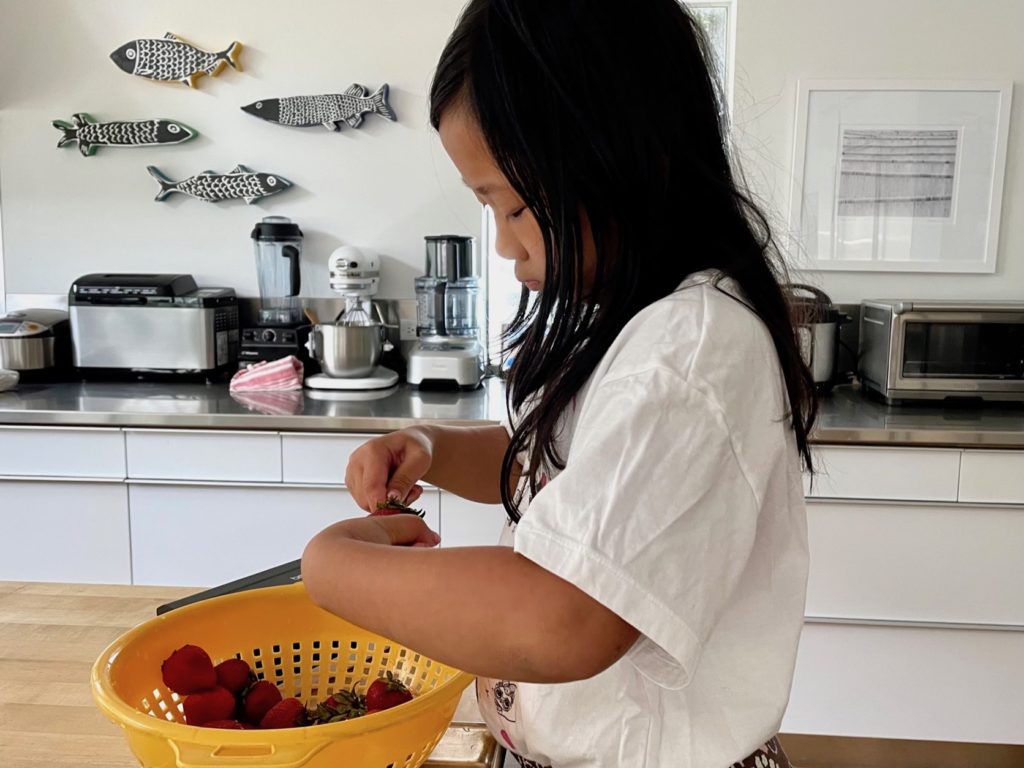
Our Paletas Recipe
- 2 cups prepared fresh fruit (see notes below)
- About 1/2 cup sugar, depending on sweetness of fruit
- 1/4 cup liquid, such as heavy cream, coconut milk, or water
- About 3 tablespoons lime or lemon juice, or to taste
Put fruit and a little more than half the sugar into a blender or food processor, along with the liquid of your choice. Purée smooth or leave it a little chunky. Taste and add as much remaining sugar, as needed. Stir in lemon or lime juice, a little at a time, and taste until the desired tartness is reached.
Fill popsicle containers or ice cube trays, leaving 1/4-inch of space at the top because the purée will expand as it freezes; freeze until firm, about 5 to 6 hours. Makes about 2 1/2 cups (20 fluid ounces) purée.
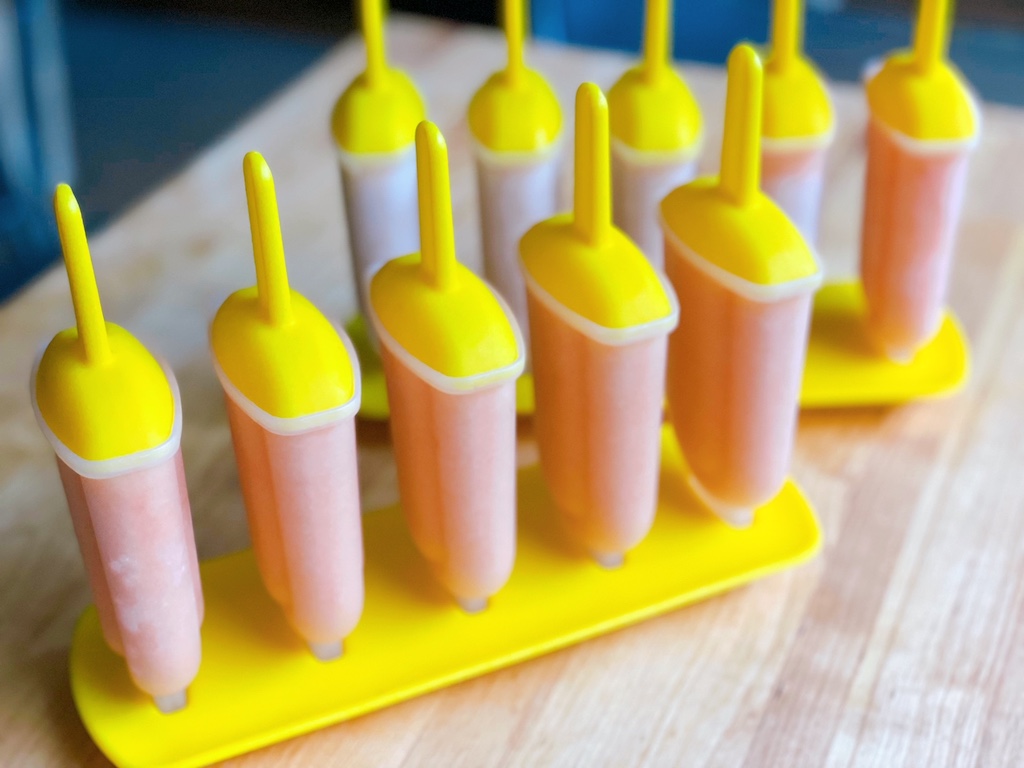
To remove the paletas from their molds, run them quickly under warm water and jiggle the paletas out of the mold.

Notes:
- Prepare fruits like peaches or nectarines by peeling and pitting. Cut fruit into chunks. Strawberries can go into the blender whole, after hulling.
- I have a powerful Vitamix blender; for blenders of very low power, you may need to cut up fruits, including strawberries, in smaller pieces.
- Liquids with fat, such as heavy cream and coconut milk, will make less-hard, easier-to-eat paletas; paletas made with water will freeze harder.
- We made ours with strawberries and heavy cream; we used less than 1/2 cup sugar and about 1 tablespoon lime juice.
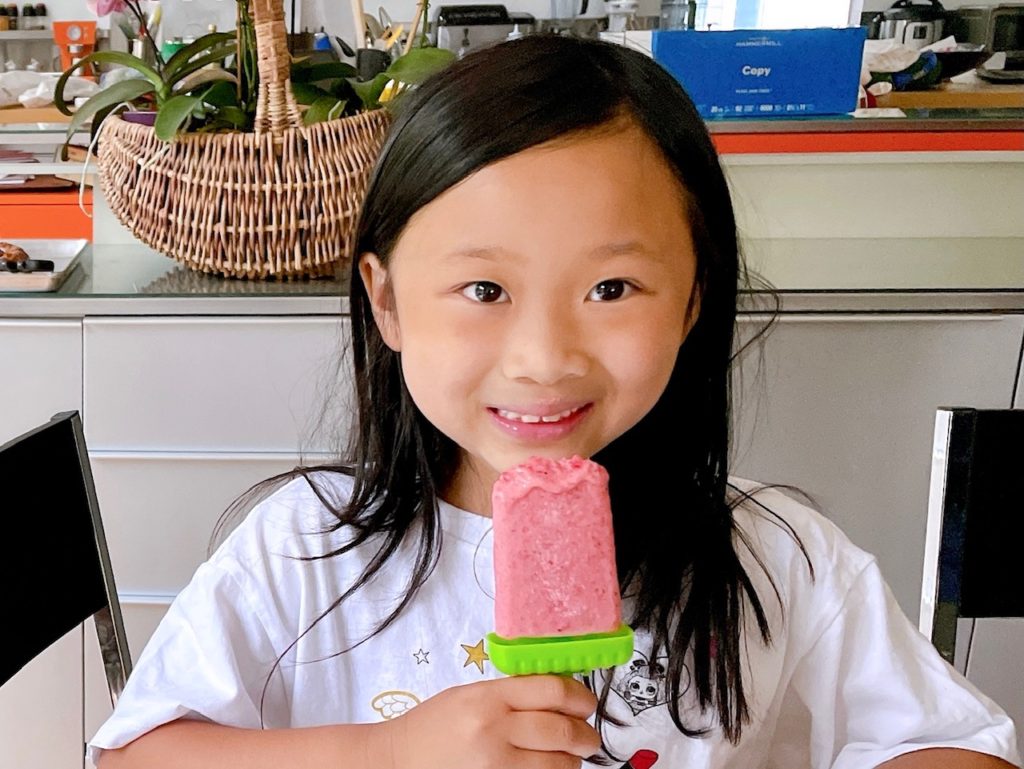
What We Learned
This was a pleasant way to teach reading because it was a multi-faceted learning experience that morphed into enjoyable related activities. One day, if Miss T is in Los Angles, she will no doubt seek out a paletero man.
- Culture: We learned a little bit about the Mexican-inspired, vibrant culture of Los Angeles and explored some of the Spanish words used in the story.
- Math: We practiced measuring accurately; by doubling the original recipe we had to multiply the amounts.
- Writing: We wrote up the recipe.
- Science: We investigated the role of sugar in making the paletas.
- Culinary: We learned to hull strawberries.
- Music: We listened to a song that enriched our experience of the book.
The Rest of our Camp Grandma Day
What did we do the rest of the day? Because Friday is our family dinner night, Miss T stayed on until the rest of her family arrived.
The extra hours gave us plenty of time to do the following:
- Miss T and I made fascinators, those hat-like headpieces worn at royal weddings (how-to next week).
- We planned a menu for a tea-for-two party–so we could wear our fascinators, of course.
- Next, we fashioned jewelry from a polymer clay kit and baked the pieces.
- Miss T set the table and helped with dinner.
News from Camp Grandma
Every Wednesday, for the next five weeks, I’ll share what we did at Camp Grandma and how it went–what worked, what didn’t, and what I learned. You’ll find ideas for one-off activities to do with the grandkids or to incorporate into a complete, Camp Grandma program.
Don’t miss a single camp session; sign up for my email newsletter.
